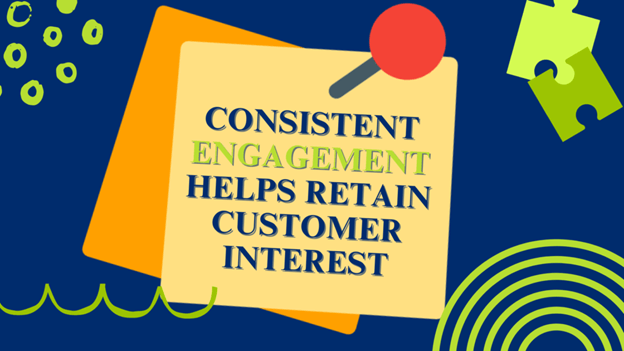Digital Marketing Strategies: Gardener Or Hunter?
As a small business owners or entrepreneurs, pinpointing the correct digital marketing techniques can be paramount for your triumph. In this blog post, we will discuss two distinct approaches to digital marketing – gardening and hunting – and how they can be blended for maximum impact.
Gardening involves nurturing relationships with potential customers through content creation, while hunting focuses on actively seeking out ready-to-buy customers. We’ll delve into the benefits of each method, as well as effective ways to integrate both strategies into your overall marketing plan.
Additionally, we will provide you with a case study on using email marketing as a powerful hunting tool. By understanding these advanced digital marketing tactics, you’ll be better equipped to maximize your online presence and drive growth for your business.
Table of Contents:
- Gardener or Hunter
- The Benefits of Gardening in Digital Marketing
- Hunting Down Customers Who Are Ready to Commit
- Nurturing Relationships Through Content Creation
- Balancing Both Approaches For Optimal Results
- Case Study: Email Marketing as a Hunting Tool
- FAQs in Relation to Digital Marketing Strategies
- Conclusion
Gardener or Hunter
In the world of digital marketing, businesses can either adopt a gardener approach by nurturing relationships with potential clients over time through content creation and engagement or opt for a hunter mindset by actively seeking out customers who are ready to make immediate decisions. This blog post explores these two distinct approaches and helps you determine which suits your business best.
The Benefits of Gardening in Digital Marketing
By taking on the role of a gardener, you focus on cultivating long-term relationships with your audience. This involves creating valuable evergreen content that continues to provide value even as trends change. Building relationships with your audience through valuable content can establish trust and credibility, encouraging them to select you when they need what you offer.
Hunting Down Customers Who Are Ready to Commit
On the other hand, adopting a hunter mentality means focusing on finding prospects who have an urgent need for what you offer and are prepared to make quick decisions. By targeting individuals at this stage in their buyer’s journey using effective sales techniques, hunters often enjoy faster conversions compared to those still researching options before committing financially.
Nurturing Relationships Through Content Creation
Adopting a gardener approach means investing in evergreen content that continues to work for you over time, like articles, videos, webinars, etc. These assets build trust with potential clients as they consume more of your content and become familiar with your brand. As a result, nurtured leads are less likely to haggle on price since they have already invested their time into learning about what you offer.
Types of Evergreen Content That Builds Trust
- Blog posts: Informative articles that address common questions or concerns within your industry.
- Videos: Educational or entertaining videos that showcase your expertise and personality.
- Ebooks: In-depth guides providing valuable insights on specific topics related to your business niche.
- Webinars: Live presentations where attendees can interact directly with the presenter and ask questions in real time.
How Consistent Engagement Helps Retain Customer Interest

By engaging customers regularly with helpful content, businesses can build trust and establish themselves as experts in their field, leading to higher sales conversions. By consistently sharing valuable content through various channels such as social media platforms, email newsletters, or blog updates, you demonstrate commitment to helping them solve their problems while also positioning yourself as an expert within the field. This consistent engagement helps establish trust between businesses and prospects, which ultimately translates into increased sales conversions when these individuals decide it’s time to make a purchase.
Actively Seeking Out Ready-to-Buy Customers
A hunter mentality focuses on finding emotionally triggered customers and preparing to make quick decisions due to an urgent need or problem. Hunters target people at this stage because it often results in faster sales conversions compared to those still researching options before committing financially.
Identifying Emotional Triggers That Drive Purchase Decisions
To effectively seek out ready-to-buy customers, you must first identify the emotional triggers that drive their purchase decisions. Common triggers include fear of missing out (FOMO), urgency, scarcity, and social proof. By comprehending these elements, you can construct marketing messages that hit home with your target market and motivate them to act promptly. For example, WordStream provides a comprehensive list of emotional triggers that can be used in various marketing campaigns.
Marketing Channels Suitable for Hunting Down Ready-to-Buy Customers
- Paid search advertising: Platforms like Google Ads allow businesses to bid on keywords related to their products or services so they appear prominently when potential buyers are searching online.
- Social media advertising: Targeted ads on platforms like Facebook and Instagram enable businesses to reach users based on demographics, interests, behaviors, and more.
- Email marketing: Sending targeted emails directly into the inbox of potential customers who have shown interest in your offerings is another effective way of reaching ready-to-buy clients.
Balancing Both Approaches for Optimal Results
While both gardening and hunting strategies have their advantages, combining them can lead to even greater success in digital marketing efforts. Nurturing relationships while also targeting individuals who show signs of being ready-to-commit buyers ensures better overall conversion rates across different stages within the buyer’s journey.
Strategies for effectively integrating both methods
- Create a content calendar: Plan your content creation efforts to include both evergreen assets that build trust over time and targeted campaigns aimed at potential customers with immediate needs. This will help you maintain consistency in your messaging while addressing various audience segments.
- Leverage data insights: Use analytics tools like Google Analytics or social media insights to identify patterns among your most engaged users and those who convert quickly. Tailor your future marketing activities based on these findings.
- A/B testing: Test different approaches by running simultaneous campaigns using gardener and hunter tactics. Measure their performance against each other to determine which method is more effective for specific goals or audiences.
Measuring success in combining gardening and hunting tactics
Evaluate the proficiency of combining these two techniques by monitoring essential performance indicators (KPIs) such as involvement metrics, transformation ratios, customer lifetime value (CLV), and return on investment (ROI). Utilize platforms like HubSpot, which offers an all-in-one solution for managing inbound marketing activities alongside targeted sales outreach initiatives.
Case Study: Email Marketing as a Hunting Tool

In this case study, we’ll explore how one business used email marketing to achieve 10-30 sales per week with an average sale value of $350. By targeting potential customers who have shown interest in their products or services, they were able to directly connect their activities to revenue generation.
Crafting Compelling Emails That Drive Action
To create effective emails that drive action, it’s essential to focus on strong subject lines and persuasive content. The key is understanding your target audience’s pain points and offering solutions that address those needs. For example, you could use HubSpot’s tips for creating more effective emails as a starting point.
- Personalize the subject line by including the recipient’s name or other relevant information.
- Create urgency by using time-sensitive offers or limited availability promotions.
- Highlight benefits rather than features – explain how your product/service solves a problem for them.
Analyzing Results and Optimizing for Future Campaigns
Email marketing success relies heavily on analyzing results and making adjustments based on data-driven insights. Metrics like open rate, CTR, conversion rate, and ROI are essential for gauging email marketing success. You can learn more about these metrics from Mailchimp’s Email Marketing Benchmarks guide.
By monitoring these numbers closely after each campaign launch, you can identify areas where improvements are needed – such as better segmentation of your audience or refining the email copy. Continuously optimizing your campaigns based on these insights will help increase overall effectiveness and ultimately lead to more sales.
FAQs in Relation to Digital Marketing Strategies
What are the 5 main strategies of digital marketing?
The five main strategies of digital marketing include:
- Inbound Marketing: Attracting customers through valuable content and personalized experiences.
- Content Marketing: Creating and distributing relevant, consistent, and engaging content to attract a target audience.
- Social Media Marketing: Promoting products or services on social media platforms to reach potential customers.
- Pay-Per-Click (PPC) Advertising: Running paid ads on search engines or websites where advertisers pay for each click their ad receives.
- Email Marketing: Sending targeted email campaigns to nurture relationships with subscribers and drive conversions.
What are articles in digital marketing?
In digital marketing, articles refer to written content created for online platforms such as blogs, websites, or social media. These pieces aim to inform, entertain, or persuade readers while promoting brand awareness and driving traffic. Articles can cover various topics relevant to the target audience and often include keywords for search engine optimization purposes.
What are the 4 types of marketing strategies?
The four main types of marketing strategies include:
- Growth Strategies: Focusing on expanding market share and increasing revenue or customer base through tactics like product development or market penetration.
- Relationship Marketing: Building long-term connections with customers by providing value-added services and personalized experiences.
- Niche Marketing: Targeting a specific, well-defined market segment with tailored products or services.
- Diversification Strategies: Expanding into new markets or offering new products to minimize risk and increase revenue streams.
Conclusion
In conclusion, digital marketing strategies can be divided into two main approaches: gardening and hunting. Gardening involves nurturing relationships with potential customers through content creation, while hunting is actively seeking out ready-to-buy customers. By balancing both methods, small and local business owners can achieve optimal results in their digital marketing efforts.
It’s important to identify emotional triggers that drive purchase decisions and use appropriate marketing channels to reach your target audience. Additionally, crafting compelling emails for email marketing campaigns can be an effective way to hunt down ready-to-buy customers.

